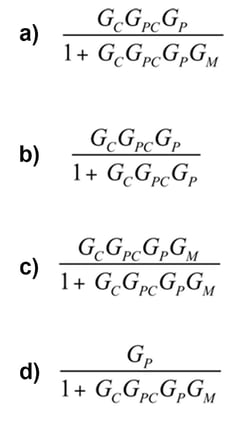AutoQuiz is edited by Joel Don, ISA's social media community manager.
Today's automation industry quiz question comes from the ISA Certified Automation Professional certification program. ISA CAP certification provides a non-biased, third-party, objective assessment and confirmation of an automation professional's skills. The CAP exam is focused on direction, definition, design, development/application, deployment, documentation, and support of systems, software, and equipment used in control systems, manufacturing information systems, systems integration, and operational consulting. Click this link for information about the CAP program. The following question comes from the CAP study guide, Performance Domain I, Feasibility Study: Identify, scope, and justify the automation project.

Given the following diagram, what is the transfer function for C(s)/R(s)?


The numerator is the product of the transfer functions between the input and output, which are "R" and "C," respectively in this case. The denominator is one plus the product of all the transfer functions.
A transfer function is a mathematical representation of the relationship between the input and output of a system. In control engineering and control theory, one derives the transfer function using the Laplace transform.
The transfer function was the primary tool used in classical control engineering. However, it has proven to be unwieldy for the analysis of multiple-input multiple-output (MIMO) systems
The correct answer is A.

Reference: George Ellis; Control System Design Guide.




